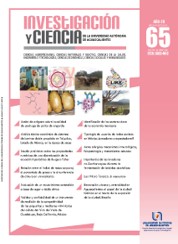Identifying key sectors in Mexican economy
DOI:
https://doi.org/10.33064/iycuaa2015653582Keywords:
input-output analysis, linkages, Rasmussen method, Chenery-Watanabe method, biateral trade, bilateral trade, economic integrationAbstract
By using Input-Output Analysis methodologies developed by Chenery-Watanabe and Rasmussen, it is possible to estimate the direct and total linkages respectively. This is done in order to identify key sectors in Mexican economy for the period from 1995
to 2009, with a level of disaggregation of 35 sectors. Thus, through the applied Methodologies one can detect changes in the production structure, both excluding the external sector, as well as performing different weights to the linkage coefficients. The overall conclusion is that the Mexican productive structure underwent changes that lead to the substitution of domestic products for foreign products. JEL Classification: C67, D57, R15, O51, O54, F15.
Downloads
References
AROCHE, F. La investigación sobre el modelo insumo-Producto en México, orígenes y tendencias. Estudios Económicos, 28(2): 249-264, 2013.
BOUCHAIN, R. C. y BRAVO, E. Una estrategia de industrialización basada en las necesidades. Seminario internacional de Teoría del Desarrollo. UNAM, 2011.
CHENERY, H. B. y WATANABE, T. International Comparisons of the Structure of Production. Econometrica, 26(4): 487-521, 1958. DOI: https://doi.org/10.2307/1907514
DIETZENBACHER, E. y VAN DER LINDEN, J. A. Sectoral and Spatial Linkages in the EC Production Structure. Journal of Regional Science, 37(2): 235-257, 1997. DOI: https://doi.org/10.1111/0022-4146.00053
FUENTES, N. A. et al Modelo de Insumo-Producto Regional en México: Una Aproximación Bibliométrica. Taller de Análisis de Insumo-Producto (mimeo). UNAM-INEGI, 2013.
GHOSH, A. Input-Output Approach in an Allocation System. Economica, 25(94): 58-64, 1958. DOI: https://doi.org/10.2307/2550694
HIRSCHMAN, A.O. The Strategy of Economic Development. Estados Unidos: Yale University Press, 217, 1958.
JONES, L. P. The Measurement of Hirschmanian Linkages. Quarterly Journal of Economics, 90(2): 323-333, 1976. DOI: https://doi.org/10.2307/1884635
LAUMAS, P. S. The Weighting Problem in Testing the Linkage Hypothesis. Quarterly Journal of Economics, 90(2): 308-312, 1976. DOI: https://doi.org/10.2307/1884632
LEONTIEF, W. Interrelation of prices, output, savings, and investment. The Review of Economics and Statistics, 19(3): 109-132, 1937. DOI: https://doi.org/10.2307/1927343
LEONTIEF, W. Quantitative input and output relations in the economic systems of the United States. The Review of Economics and Statistics, 18(3): 105-125, 1936. DOI: https://doi.org/10.2307/1927837
NÚÑEZ, G. Macro Matriz de Contabilidad Social de México para el año 2003. Econoquantum, 11(2): 75-99, 2014. DOI: https://doi.org/10.18381/eq.v11i2.2312
NÚÑEZ, G. MCS y MEGA de México para 2008 y el caso de los impuestos sobre la extracción de hidrocarburos. Documento de trabajo. El Colegio de México, 2015.
RASMUSSEN, P. N. Studies in Intersectoral Relations. Holanda: North-Holland Publishing Co., 217, 1956.
SCHULTZ, S. Approaches to identifying key sectors empirically by means of input‐output analysis. The Journal of Development Studies, 14(1): 77-96, 1977. DOI: https://doi.org/10.1080/00220387708421663
STREIT, M. E. Spatial Associations and Economic Linkages between industries. Journal of Regional Science, 9(2): 177-188, 1969. DOI: https://doi.org/10.1111/j.1467-9787.1969.tb01332.x
De páginas electrónicas
TIMMER, M. P. (Ed.) The World Input-Output Database (WIOD): Contents, Sources and Methods. WIOD Working Paper Number 10, 2012. Recuperado el 15 de enero del 2013 de<http://www.wiod.org/publications/papers/wiod10.pdf>
Published
How to Cite
License
Copyright (c) 2015 Carlos Obed Figueroa Ortiz

This work is licensed under a Creative Commons Attribution-NonCommercial-ShareAlike 4.0 International License.
Las obras publicadas en versión electrónica de la revista están bajo la licencia Creative Commons Atribución-NoComercial-CompartirIgual 4.0 Internacional (CC BY-NC-SA 4.0)









